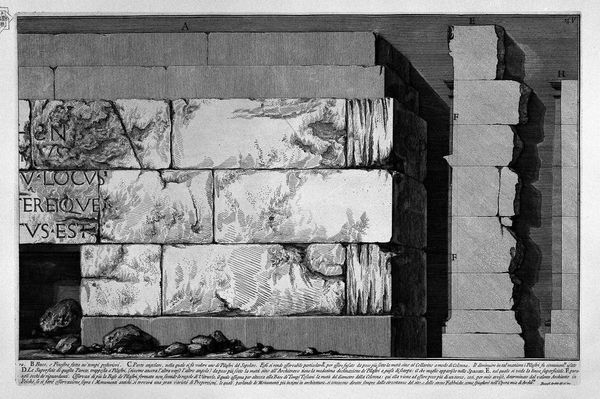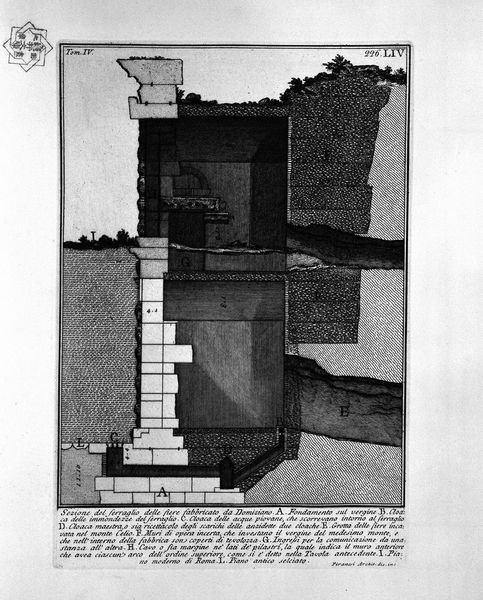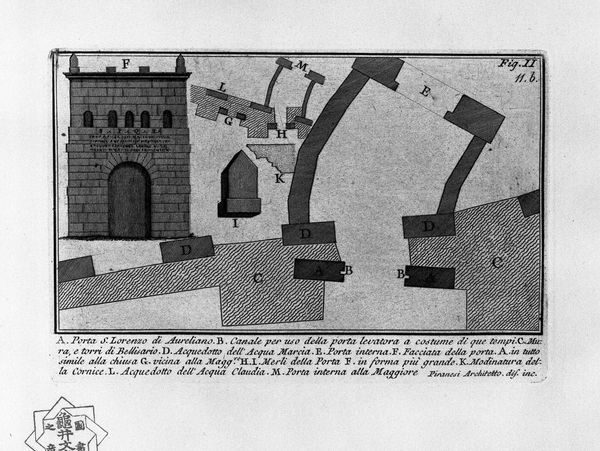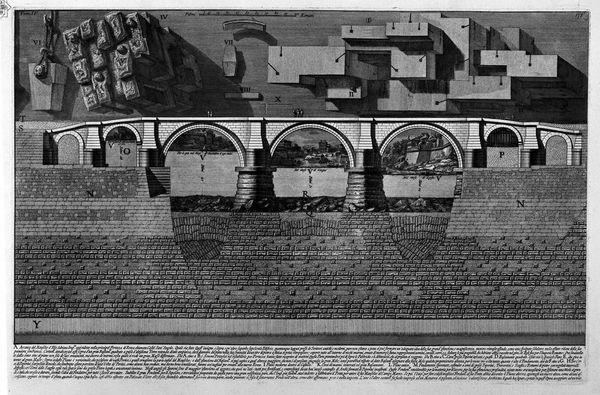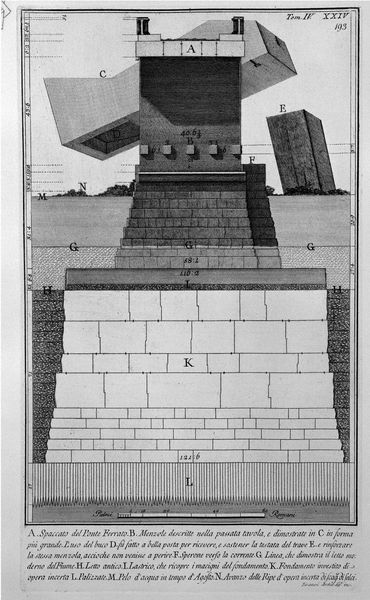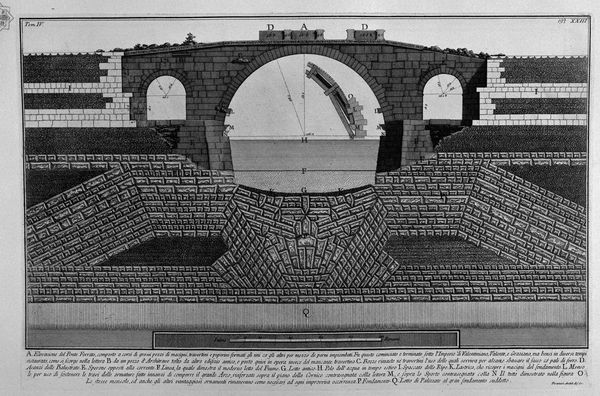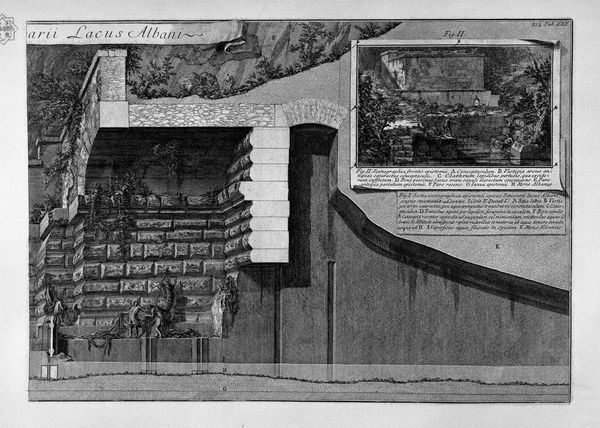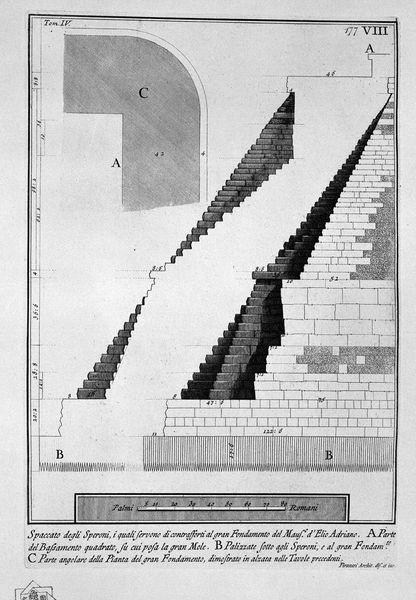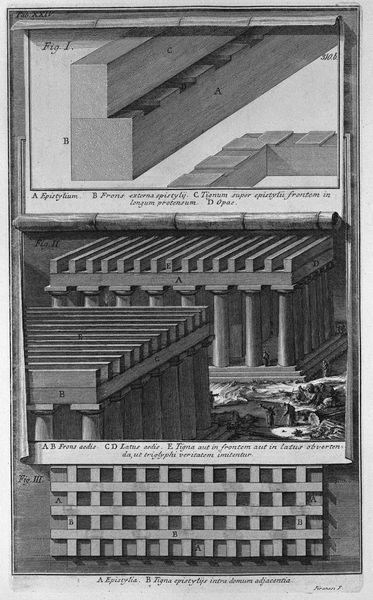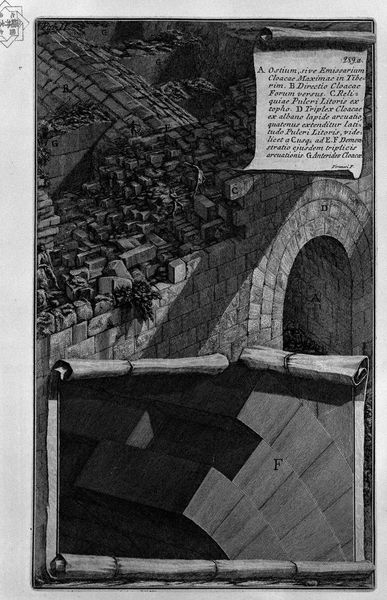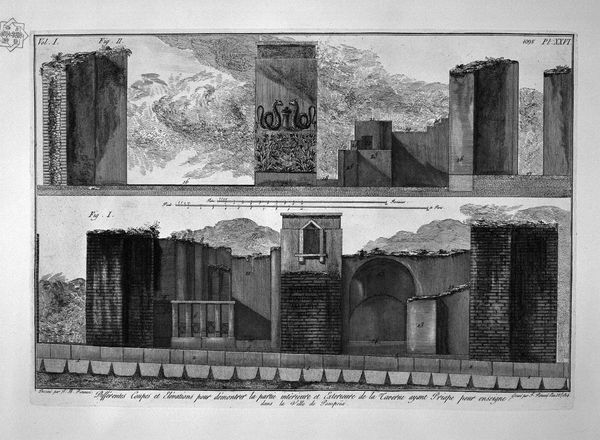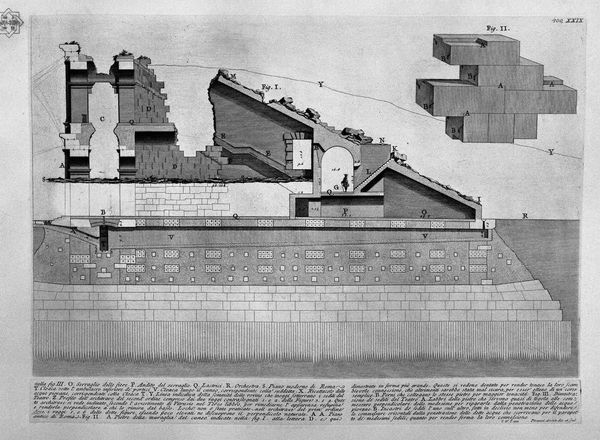
drawing, print, engraving, architecture
#
drawing
# print
#
perspective
#
historic architecture
#
text
#
traditional architecture
#
romanesque
#
ancient-mediterranean
#
line
#
architectural
#
engraving
#
architecture
#
monochrome
Copyright: Public domain
Curator: Here we have an engraving by Giovanni Battista Piranesi, titled "Construction details of the Cloaca Maxima." It shows multiple cross-sections and construction details of the ancient Roman sewer system. Editor: It's striking how Piranesi chose to depict a sewer system. The stark monochrome and precise linework almost glorify something typically hidden and unpleasant. There is also text on this drawing! How does this information serve the artist's broader mission and what message does he have for society at large? Curator: Piranesi was fascinated by the grandeur and engineering feats of ancient Rome. The Cloaca Maxima was an incredible accomplishment; it speaks to the Roman's mastery of civil engineering. He presented it to 18th-century viewers in a way that sparked appreciation for classical antiquity. The lettering within the piece is key because it helps the viewer understand different features that can be appreciated from various angles and proximities, making it a valuable architectural archive to consider. Editor: Right, but there's also a tension here, isn't there? While celebrating Roman ingenuity, it also implicitly critiques the present. The crumbling sections exposed here underscore not only Roman architectural ingenuity, but invite commentary on power dynamics. In thinking about social activism today, this reminds me of infrastructure projects—often presented as public goods, that can have destructive impacts on the lives of already vulnerable groups through neglect and unequal access. Curator: I understand the connection you are trying to make. Yet, for Piranesi and the 18th-century viewer, this kind of detailed illustration served a practical, almost documentary purpose, alongside its artistic value. Remember that archaeological investigation during this era was far from exact. His detailed prints were a way to visualise and understand lost Roman structures. Editor: Perhaps, but the choice to focus on the "underbelly" of Roman society still makes me think. It's about confronting viewers with the infrastructural underpinnings of civilization itself. If it’s about a “practical, almost documentary purpose,” the composition complicates such notion. The print offers many viewing points, encouraging a dynamic exploration by the audience that goes beyond archival purposes. Curator: You're right. Piranesi was about romanticising Rome through this type of archival. But there’s a lesson there. Examining systems—social or, as in this case, literal waste systems—forces a reckoning with not only progress, but who profits. Editor: Precisely.
Comments
No comments
Be the first to comment and join the conversation on the ultimate creative platform.

